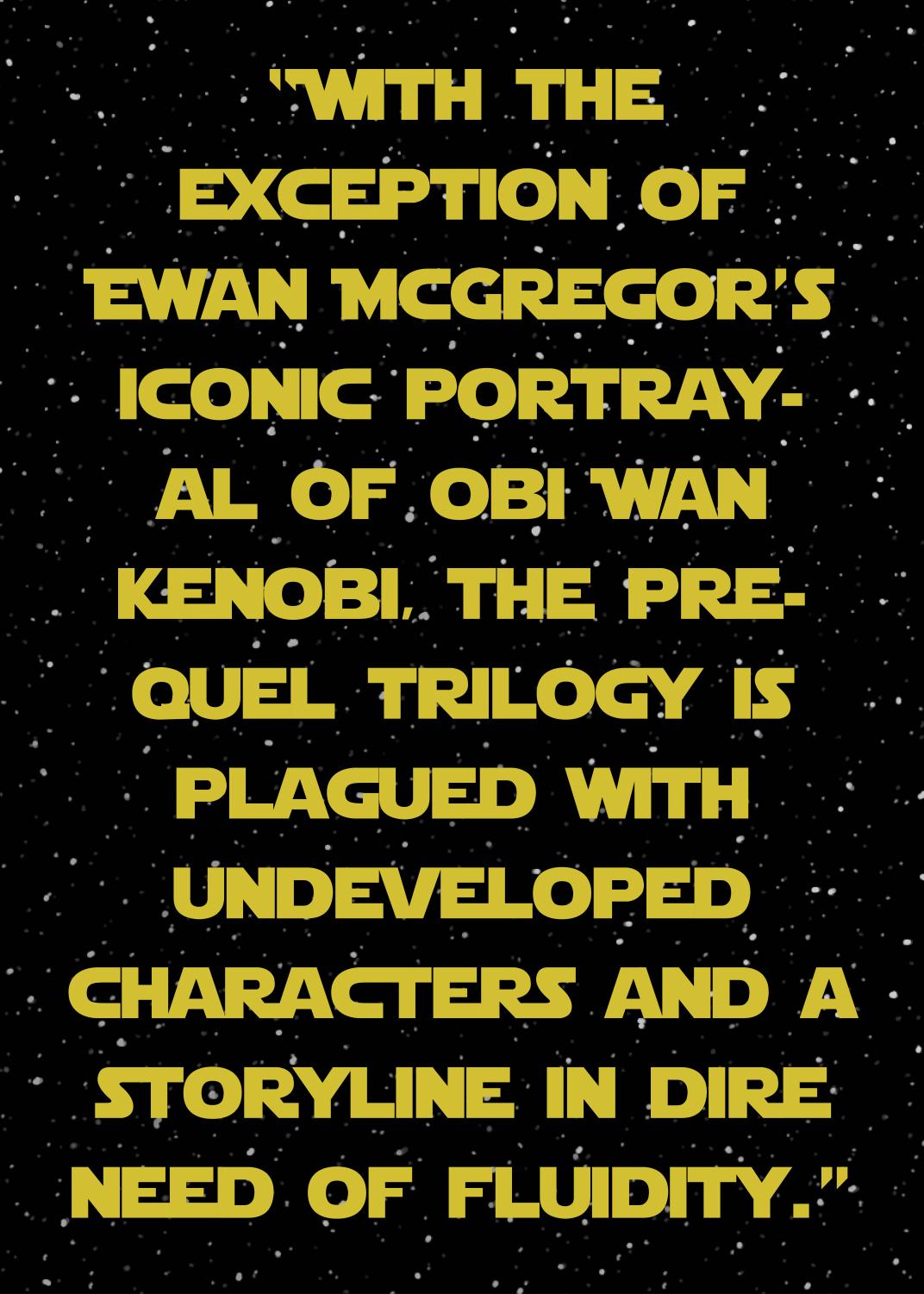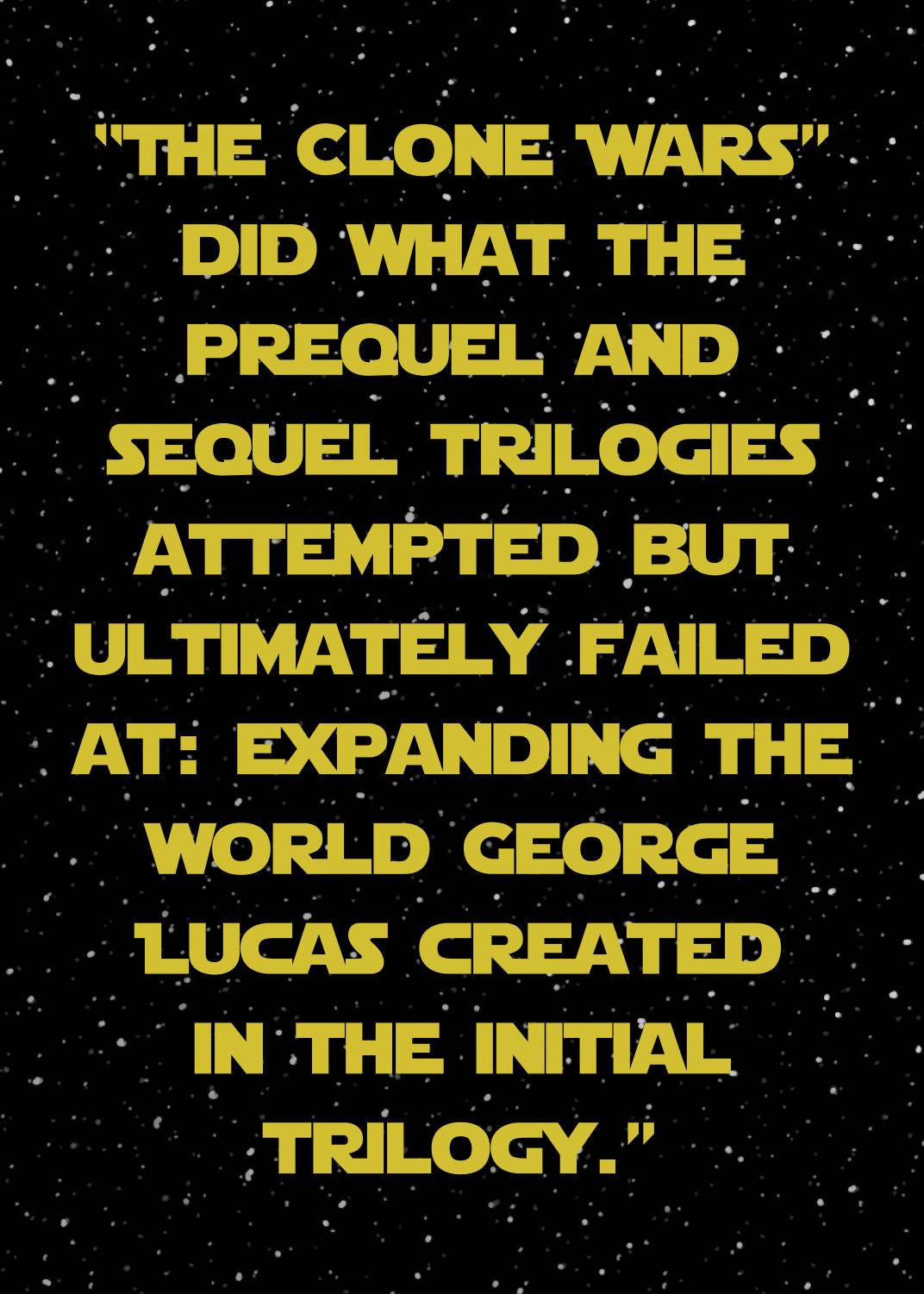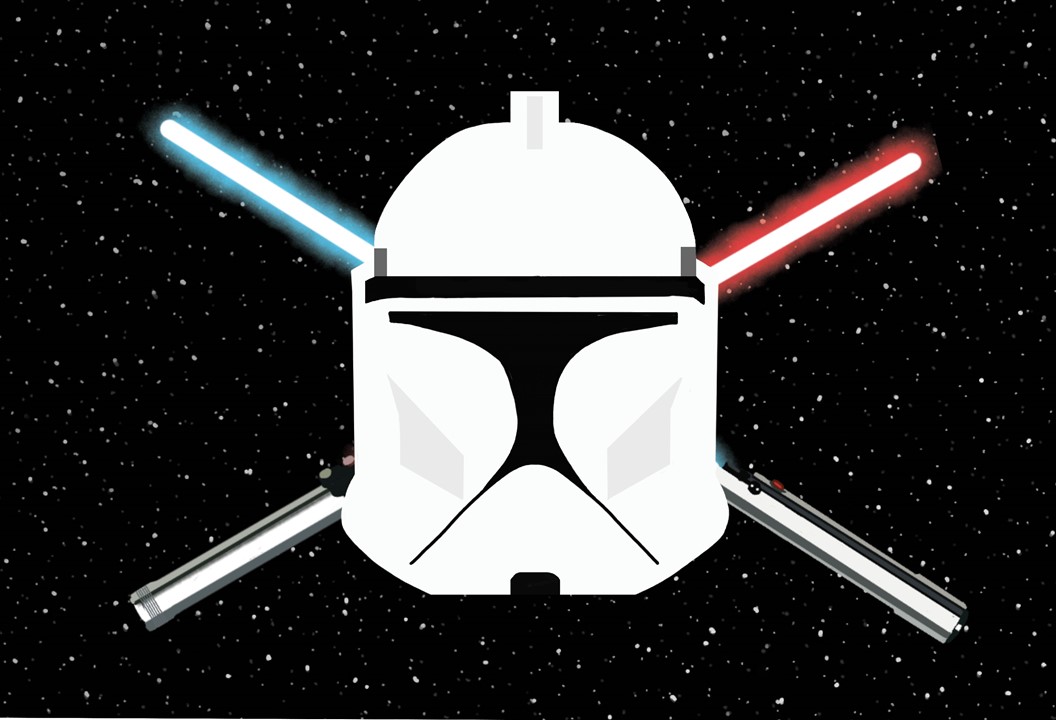A love letter to Star Wars: The Clone Wars after seven memorable seasons
May 13, 2020
The Monthly
Between hated characters like Jar Jar Binks and infamously bad dialogue — does anyone else remember “I hate sand?” — the legacy of the Star Wars prequel trilogy remains controversial at best.

We start the series with a young Anakin Skywalker and end with the establishment of Darth Vader — one of the most well-loved movie villains of all time. However, his journey from idealistic youth to an antagonistic Sith Lord fails to be fully fleshed out, leaving his characterization childish and misplaced.
With the exception of Ewan McGregor’s iconic portrayal of Obi Wan Kenobi, the prequel trilogy is plagued with undeveloped characters and a storyline in dire need of fluidity. Unlike the initial trilogy, where all three episodes took place in short succession of each other, the prequels jumped several years from movie to movie, resulting in many unanswered questions about what happened during those missing chunks of time.
If I haven’t made it clear so far, here’s the short version: the prequel trilogy by itself has some issues.
That being said, in the wise words of General Leia Organa: “there is always hope.”
“Star Wars: The Clone Wars” not only fixes almost every single issue with the prequel series, but it actually makes Episodes I through III a meaningful part of the Star Wars saga. I’d even argue this cartoon television show from the early 2000s produced some of the most noteworthy Star Wars content to date.
For context, “Star Wars: The Clone Wars” was a television show developed by George Lucas — the original creator of “Star Wars” and the director of four episodes of the saga — and the fabulous Dave Filoni that aired on Cartoon Network from 2008 through 2013. After briefly switching to Netflix, the show was cancelled amid Disney’s acquisition of Lucasfilm, leaving the final season forever on the drawing boards.
But to the shock of many, Disney announced in 2018 they intended to develop and air the 12 episodes of the last season — to answer questions first ignited almost two decades ago with the premiere of Episode I. The final season aired this year from February to May, concluding on Star Wars Day, May 4.
After Disney’s initial announcement, I rewatched “The Clone Wars.” Twice, if I’m being honest.

“The Clone Wars” did what the prequel and sequel trilogies attempted but ultimately failed at: expanding the world George Lucas created in the initial trilogy.
Contrary to popular thought, the prequel series isn’t just a battle between the Jedi and the Sith. Episodes II and III focus on the beginning and end of an intergalactic civil war between the democratic Galactic Republic and the Confederacy of Independent Systems, which strived for financial and geopolitical independence.
“The Clone Wars” fully fleshes out the gory battles and the overarching chronology of the war, and it didn’t shy away from plotlines that challenged the typical Star Wars narrative while doing so.
Entire storylines were dedicated to exploring the intricacies of government encroachment into the intergalactic banking system. We spent an entire arc exploring the mythic conceptualizations of good and evil. Likewise, the series acknowledged the realities and ramifications of war.
Unlike the other cartoon Star Wars television series, “Star Wars Rebels,” “The Clone Wars” brutally depicted death scenes, at one point even showing a character trapped in a lethal Force choke unwillingly shoot his accomplice with a blaster pistol. Keep in mind, this was a show theoretically meant for children.
Furthermore, “The Clone Wars” redeemed characters that were introduced in the prequel series. Protagonists and antagonists alike were finally given backstories and emotions, complex plotlines and depth.
Transformed from a well-dressed love interest to a vital part of the war’s political manications, Padmé Amidala’s role in Episode III was finally contextualized. Anakin Skywalker’s slow descent to the darkside was built step by step through his crumbling trust in the Jedi Council — an organization whose corruption was also given a well-needed backstory.

Even the original phantom menace himself — Darth Maul — was transformed from a blank slate of a villain to arguably one of the most complex characters in the entire saga.
Similarly, “Star Wars: The Clone Wars” did what Hollywood has been trying to do for decades: introduce a new female character into a primarily male-dominated series. In the first season of the show, our hero, Anakin, is tasked with mentoring a padawan apprentice, Ahsoka Tano.
In the years following the series’ premiere, Tano has gone on to become one of the series’ most beloved characters and one of the most powerful Force wielders, even making a vocal cameo in “The Rise of Skywalker.” She not only wooed the fanbase, but has left a lasting impact on the saga.
While “Star Wars: The Clone Wars” might have ended two weeks ago, its legacy lives on within the larger Star Wars universe. In the critically acclaimed series “The Mandalorian,” many fans were left puzzled over the introduction of a black lightsaber sword — where did that come from? Well, if you watched season five of “Star Wars: The Clone Wars,” you would be in the know.
In the less critically acclaimed “Solo: A Star Wars Story,” Darth Maul made a surprise appearance as the leader of the Crimson Dawn crime syndicate. Thought he died back in Episode I? If you had watched “Star Wars: The Clone Wars,” his appearance would seem only logical.
The impact that “Star Wars: The Clone Wars” has had on the franchise can’t be understated. And it shows how the series was more than a kids show: it was a program that shaped my childhood and the childhoods of many younger “Star Wars” fans. If you have any interest in the franchise, you owe yourself a watch.
Email: cbuchaniec@u.northwestern.edu
Twitter: @caty_buchaniec
Related Stories:
—Podculture: Students and faculty reflect on nostalgic films, scores and books
—Former Disney animation director John Musker finds his happily ever after
—Borrok: The monopolizing of culture is dangerous

